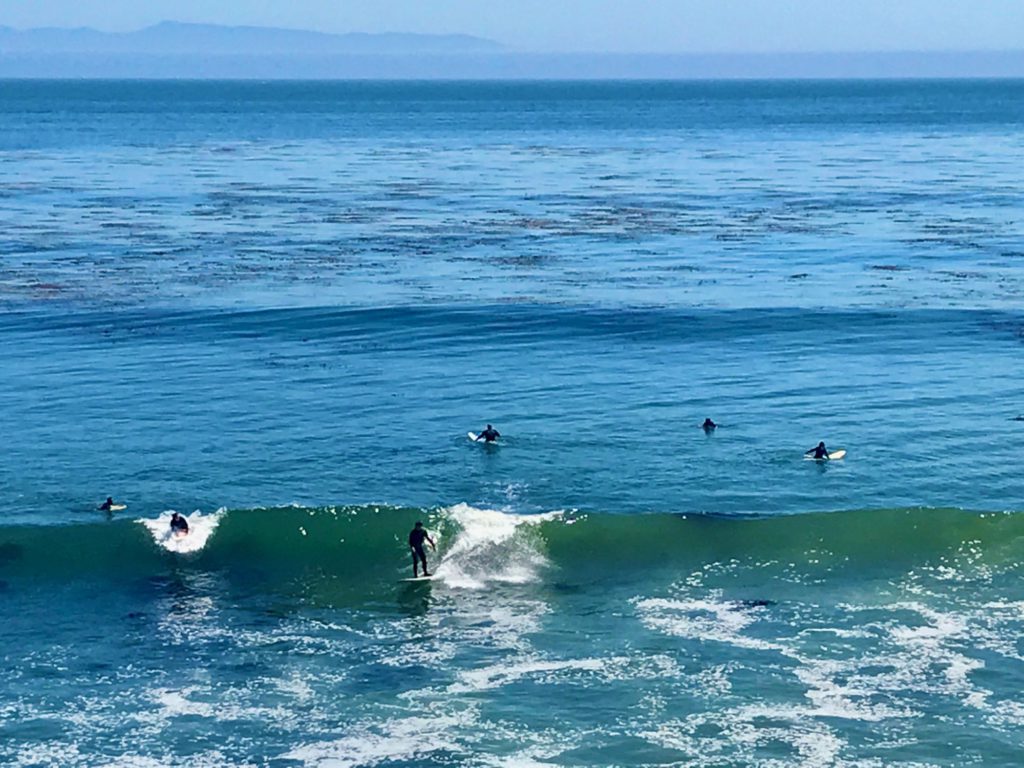(Bloomberg) — Scientists have created the world’s largest digital map of kelp forests, a potentially powerful tool to track the health of these underwater rainforests that store large amounts of carbon dioxide but are threatened by warming oceans.
In addition to being a bulwark against climate change, kelp forests provide habitat for some 800 marine species, including sea otters, whales and commercially valuable seafood such as abalone. In places like California, kelp helps protect coastlines from storms and grooms waves for a multimillion-dollar surfing industry. It’s also an ingredient in food and cosmetics and can be refined as a biofuel. A climate-driven marine heatwave, though, wiped out 95% of kelp forests along a 200-mile stretch of California’s north coast between 2014 and 2017, devastating local fishing communities.
The mapping tool at Kelpwatch.org released April 4 shows changes in kelp cover along the length of the California coast since 1984. It will be updated every quarter and can be used to target areas most suitable for kelp restoration. The project is a collaboration between scientists at the Nature Conservancy, the University of California at Los Angeles, the University of California at Santa Barbara and Woods Hole Oceanographic Institution.
“Kelp forest ecosystems are threatened and in decline in many places around the world,” said Vienna Saccomanno, an ocean scientist who heads the Nature Conservancy’s kelp mapping and monitoring program. “The people charged with managing, protecting and restoring these ecosystems are often paralyzed by a lack of data and the scale of the problem.”
Researchers trained computers to recognize characteristics of kelp in four decades’ worth of Landsat satellite images. They then spent years compiling that data so it could be used to visualize fluctuations in the size of kelp forests over time. Though the satellites are deployed to recognize phenomena on land, canopies of kelp forests share visual attributes with terrestrial forest canopies, making them detectable from space, according to Kyle Cavanaugh, a marine scientist and associate professor of geography at UCLA.
“There’s been continuous Landsat coverage of the planet since the early ’80s, and that is just incredibly valuable when you’re trying to look at long-term changes in a marine ecosystem that changes really rapidly,” said Cavanaugh, who began to develop techniques to extract images of kelp from satellite data as part of his PhD research. “That will help identify where kelp might be especially threatened by climate change or other stressors, as well as identifying areas that are more resilient to climate shocks.”
When you zoom in on the Mendocino County coast north of San Francisco on Kelpwatch and press play on the timeline, ribbons of green appear and disappear offshore. That marks seasonal variations in the bull kelp canopy coverage as the brown algae blooms and then dies off. Commercial divers in harbor towns along the Mendocino coast relied on the predictable lifecycle of those healthy kelp forests to nurture the red urchins they harvested. But when the Kelpwatch timeline approaches 2014, the green fades to gray and does not reappear.
That’s when the marine heat wave, which scientists have linked to climate change, hit California. Elevated ocean temperatures weakened kelp forests and magnified the impact of a disease that killed off an estimated 91% of the population of sunflower sea stars between Mexico and Alaska. A Technicolored 24-armed predator, the sea star kept kelp-eating purple urchins in check. In the absence of sea stars, purple urchin populations exploded and they devoured kelp forests, leaving large sections of the coast devoid of marine life.
As state officials and environmental organizations plan kelp projects, scientists said Kelpwatch could prove valuable in targeting areas most appropriate for restoration. For instance, in 2021 some spots on the north coast showed signs of kelp recovery, indicating that ocean conditions had improved.
“Looking at how current dynamics compare to historical dynamics is really important, and that’s where I see Kelpwatch being a potentially cool tool in helping understand that context,” said Michael Esgro, senior biodiversity program manager at the California Ocean Protection Council, a state agency involved in kelp restoration.
Saccomanno said there are plans to expand Kelpwatch to Australia, Chile and other areas of the world where kelp forests are under threat, and that researchers are exploring the potential to include additional satellite data in the program.
Kelpwatch also can alert scientists to kelp forests under stress, said Cavanaugh. Kelp in the Monterey Bay on California’s central coast, for instance, had survived the marine heat wave largely unscathed, thanks in part to a local population of purple urchin-eating sea otters. (The marine mammals had been exterminated on the north coast by hunters a century ago, leaving sunflower sea stars as the purple urchin’s remaining predator there.)
But he noted that researchers started seeing some areas of kelp loss in Monterey Bay in 2018. “Now, these areas of decline are getting a little bit more widespread so this is definitely an area of concern that we’re watching closely,” Cavanaugh said. “It’s not feasible to monitor the whole coast by eye or boat, but Kelpwatch can serve as an early-warning system.”
More stories like this are available on bloomberg.com
©2022 Bloomberg L.P.











